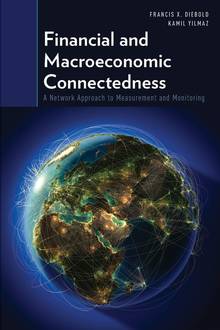Financial and Macroeconomic Connectedness
Francis X. Diebold and Kamil Yilmaz
Éditeur : OXFORD UNIVERSITY PRESS
ISBN papier: 9780199338306
Parution : 2015
Code produit : 1377476
Catégorisation :
Livres /
Gestion /
Finance /
Analyse financière
Formats disponibles
| Format | Qté. disp. | Prix* | Commander |
|---|---|---|---|
| Livre papier | En rupture de stock** |
Prix membre : 45,13 $ Prix non-membre : 47,50 $ |
*Les prix sont en dollars canadien. Taxes et frais de livraison en sus.
**Ce produits est en rupture de stock mais sera expédié dès qu'ils sera disponible.
Description
Connections among different assets, asset classes, portfolios, and the stocks of individual institutions are critical in examining financial markets. Interest in financial markets implies interest in underlying macroeconomic fundamentals. In Financial and Macroeconomic Connectedness, FrankDiebold and Kamil Yilmaz propose a simple framework for defining, measuring, and monitoring connectedness, which is central to finance and macroeconomics. These measures of connectedness are theoretically rigorous yet empirically relevant. The approach to connectedness proposed by the authors is intimately related to the familiar econometric notion of variance decomposition. The full set of variance decompositions from vector auto-regressions produces the core of the 'connectedness table.' The connectedness table makes clear how onecan begin with the most disaggregated pair-wise directional connectedness measures and aggregate them in various ways to obtain total connectedness measures. The authors also show that variance decompositions define weighted, directed networks, so that these proposed connectedness measures areintimately related to key measures of connectedness used in the network literature.After describing their methods in the first part of the book, the authors proceed to characterize daily return and volatility connectedness across major asset (stock, bond, foreign exchange and commodity) markets as well as the financial institutions within the U.S. and across countries since late1990s. These specific measures of volatility connectedness show that stock markets played a critical role in spreading the volatility shocks from the U.S. to other countries. Furthermore, while the return connectedness across stock markets increased gradually over time the volatility connectednessmeasures were subject to significant jumps during major crisis events. This book examines not only financial connectedness, but also real fundamental connectedness. In particular, the authors show that global business cycle connectedness is economically significant and time-varying, that the U.S. has disproportionately high connectedness to others, and that pairwisecountry connectedness is inversely related to bilateral trade surpluses























